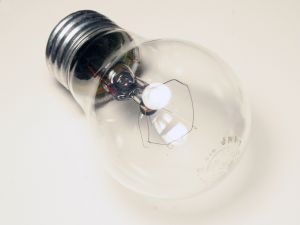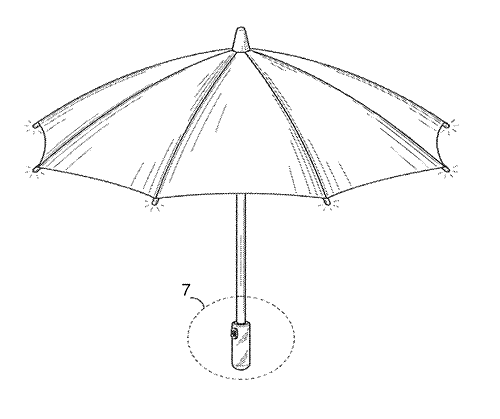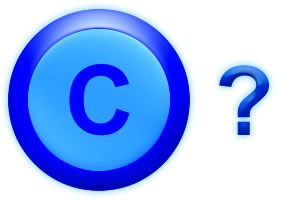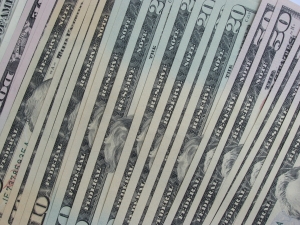 Is it possible to patent an idea? “Patenting an idea” is one of the most commonly used expressions when someone wants to be granted a patent for something new that they have developed. However, an idea itself cannot be patented.
Is it possible to patent an idea? “Patenting an idea” is one of the most commonly used expressions when someone wants to be granted a patent for something new that they have developed. However, an idea itself cannot be patented.
What is patentable is the physical manifestation of an idea or process. So when you say you want to “patent an idea”, what you really mean is that you want to be granted a patent for an invention or process that you have develop from your idea.
That being said, a patent for your “idea” will provide you with the exclusive right to exclude others from making, using, selling or importing anything that falls within the “claims” of your patent.
The 5 Steps To Patent An Idea
In order to patent an idea follow these five steps:
1. Determine If Your Idea Is Eligible for a Patent
In order to patent an idea it must be:
a. Novel (new) – something that has not been seen before.
b. Non-obvious – it must be more than just an obvious improvement on what already exist. It must result from a notably inventive process.
c. Useful – it must be able to be manufactured and do what you claim it does.
There are some ideas, however, that are always excluded from being patented. These include natural laws, physical phenomena, abstract ideas and inventions that are offensive to public morality. Patents are also unavailable for copyrightable material , such as, literary, dramatic, musical, and artistic works.
2. Perform a Patent Search
A patent search is a search of all available information, domestic and foreign, to determine if your idea has been patented, disclosed or otherwise seen before. This means searching all “prior art”, which includes prior patents, patents pending and published literature. An idea that has already been disclosed to the public is not considered new and therefore is not patentable. You can perform a patent search yourself using online search engines or you can employing a professional to do the search for you.
3. Determine Which Kind of Patent Your Idea Requires
There are three categories of patents:
a. Utility patents – the most common type of patent. It covers the functional element of a new invention like how it is used and works. For example, a new and useful tool for tightening screws might require a utility patent.
b. Design patents – covers aspects of an invention’s appearance, for example its shape and ornamental features. Consider the tool above, its shape, the material its made of and the ornamental grooves on its surface would be the objects of design patents.
c. Plant patents – only given to those who invent or discover new asexually reproduced plants.
Design patents are less expensive and typically much easier to obtain than utility patents. Utility patents, however, offer broader protection than design patents, which can make it more difficult for competitors to imitate your invention. It is very common for a single invention to carry a combination of both utility and design patents.
4. Decide How You Want To file
There are three filing routes you can choose from to patent an idea:
a. File a provisional patent which is valid for twelve months and can be considered a place-holder for a full patent application. It is less expensive, allows you to set an early filing date and to take up-to one year to file a non-provisional patent application.
For those who cannot immediately afford an attorney, or the costs of a non-provisional patent (which could reach thousands of dollars), a provisional patent provides two key benefits:
- You receive up to 12 months to find the money or negotiate any third party deals such as royalties and licensing fees which may finance the rest of the patenting process.
- You receive the earliest possible filing date for your invention. This is extremely important since in every country of the world (including the United States from March 16, 2013) the right to be granted a patent for a new invention goes to whomever files for the patent first.
b. File a non-provisional patent which is the basic patent for new invention in the United States and is valid from 14 -20 years, depending on the type of patent granted and your filing date.
c. Apply for an International patent via the Patent Cooperation Treaty (PCT). The PCT is an agreement between 146 nations around the world. It allows an applicant to file one application, in one language and at one patent office in order to receive patent protection in all of the member nations of the PCT agreement.
Filing under the PCT allows you to delay the cost of patenting for up to 30 months while you choose the particular countries in which you would like your invention protected. Its a very inexpensive way to both test the viability of patenting your invention abroad and ultimately to receive international protection.
5. File Your Application With The USPTO
a. Prepare the specification. The specification is an essential part of your patent.and contains the diagrams and detailed instructions on how to manufacture your invention.
b.Write the claims. The claims give a detailed description of how your invention works and are the most important part of your patent application. The claims define the scope of protection your invention will receive. Most patent violation center around the interpretation of the claims, so claims must be broad enough to prevent others from copying your invention, but not so broad as to cause your application to be rejected.
c. Submit the completed application. In addition to the documents above, various other data sheets, statements and forms must be filled-out. The amount of paperwork will vary depending on which type of patent you are applying for. All the forms are available on the United States Patent and Trademark Office (USPTO) website and you may submit your application via mail or electronically through the USPTO’s electronic filing system (EFS). Submitting your application via EFS is simple, secure and allows you to submit your application from anyplace with internet access. In addition, filing electronically is considerably cheaper than paper filing.
Depending on the kind of application and the technology involved in your invention, it may take up to three years for your patent to be granted. However, If you observe the guidelines for patenting, you should then be able to claim ownership of your patent and prevent others from making, using, selling or importing your idea, while you enjoy the exclusive right to exploit it for maximum financial gain.


 Inventors have enjoyed the ability to file a Provisional Patent Application since June of 1995.
Inventors have enjoyed the ability to file a Provisional Patent Application since June of 1995.
 In this article we cover the much asked question of how to patent a design. Design patents are granted for designs that are new, ornamental in nature and applied to an article of manufacture. They cover the aesthetic aspects of an article only, as opposed to utility patents, which cover an article’s function and utility.
In this article we cover the much asked question of how to patent a design. Design patents are granted for designs that are new, ornamental in nature and applied to an article of manufacture. They cover the aesthetic aspects of an article only, as opposed to utility patents, which cover an article’s function and utility.
 In this article we talk about how to copyright an idea. Have you a written a new ebook that you would like to distribute or a new song that you would like to publish? Do you have an idea for a movie script that you would like to shop around? Have you developed a new app for smart-phones that you would like to sell online?
In this article we talk about how to copyright an idea. Have you a written a new ebook that you would like to distribute or a new song that you would like to publish? Do you have an idea for a movie script that you would like to shop around? Have you developed a new app for smart-phones that you would like to sell online?
 In this article we provide a brief discussion of patent licensing as an attractive way for inventors to monetize their patents.
In this article we provide a brief discussion of patent licensing as an attractive way for inventors to monetize their patents.